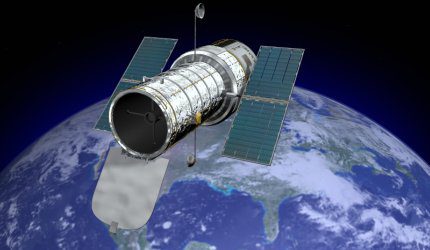As NASA’s director for astrophysics, I led the team that built the Hubble Space Telescope. The discovery that a flawed mirror rendered the telescope useless, followed by the failure review board’s determination that a “leadership failure” was the root cause, devastated both my team and me.
I busied myself managing the aftermath and assembling the mission to repair Hubble in space. NASA later awarded me an outstanding leadership medal after the servicing mission succeeded. (It is a wonderful world when you can break something and then receive a medal for fixing it.) As time went on, I wanted to understand and atone for my leadership failure.
Meanwhile, I became a professor in the business school at the University of Colorado (CU). I taught a course called 21st-Century Leadership to undergraduates and MBA students. At the end of my two-year appointment, the dean arranged a review of my course by CEOs of large corporations. Three of them asked me to bring my course into their companies. I left CU in 1995 and founded a company called 4-D Systems with a contract from a large accounting firm. Trained as an experimental physicist, I began 15 years of experimentation with how adults learn — particularly learning what causes behavioral change.
I began by evolving my university course into a three-day workshop. My clients used “smiley sheet” scores to gauge the value. My workshops received ratings of 8 and above, and everyone was happy. Then, I noticed a repeat participant from a workshop six months earlier did not know the core material. This piqued my curiosity.
I reflected on the real effect that business books I enjoyed reading had on my behaviors; it was nil. I watched senior business executives pass out copies of a book they particularly liked to their subordinates. I then observed that neither they nor the subordinates did what the books recommended.
It became clear that 4-D Systems needed a way to measure the effect our workshops had on the only thing that matters — behavioral change. We built accurate and efficient assessments that contained learning. We anchored our assessment strategy in the foundations of our work: the 4-D System, a process that analyzes team and individual performance factors.
This process came to inform my efforts at NASA. At the time of Space Shuttle Columbia’s disintegration in 2003, 4-D Systems began an NASA-wide team-building activity. NASA found 4-D’s integrated system of workshops, assessments and coaching attractive. We insisted, and NASA agreed, that all participation be voluntary. We worked with NASA’s most important teams — those launching the space shuttle, operating the International Space Station and building rovers for Mars. The busy, time-stressed teams adapted our processes.
We gathered enough data to do some meaningful analysis. About 18 months ago, we charted 198 NASA teams with multiple assessments. We grouped the teams according to their starting quintile. Astoundingly, on average, all teams enhanced their performance with each reassessment. Moreover, the teams that started in the bottom three quintiles — 60 percent of all teams — enhanced their performance an average of 5 percent with each assessment cycle. Most NASA teams were reassessed every four to six months. Do the math. What would it be worth to you to save 5 percent of the salaries of a 24-person technical team over a six-month period while reducing risk and improving customer relations? Assessments work because teams are managing the field that drives team behavior: team social context.
What about where we started — our three-day workshops? There is huge demand for them, and they look nothing like my university classes. They now include carefully crafted “significant emotional events.” Moreover, the content is driven by pre-workshop team and individual development assessment data. We still use “smiley sheet” scores, but only for fun, and the average score is above 9 out of a possible 10. You can do assessments free online at NASAteambuilding.com.
Charles J. Pellerin is the author of How NASA Builds Teams. He can be reached at editor@clomedia.com.















